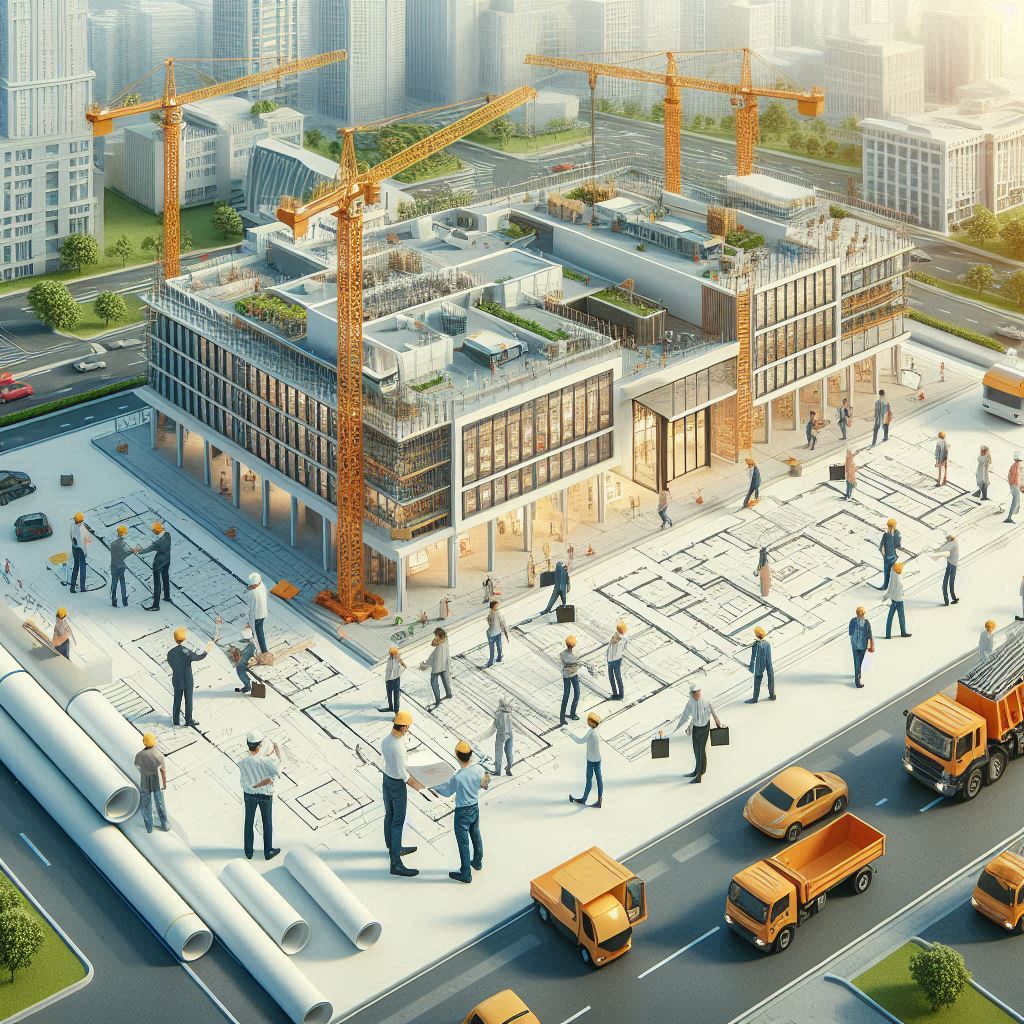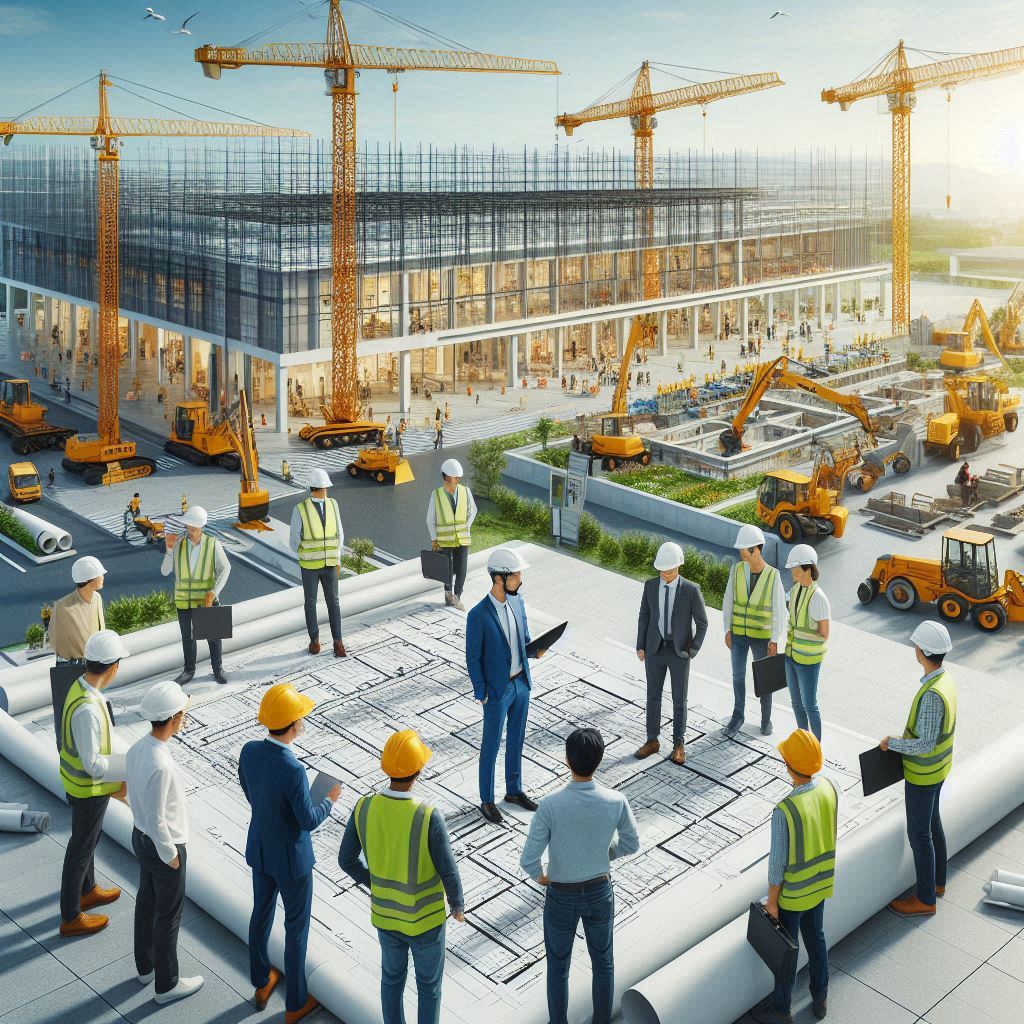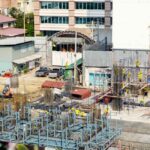This website uses cookies so that we can provide you with the best user experience possible. Cookie information is stored in your browser and performs functions such as recognising you when you return to our website and helping our team to understand which sections of the website you find most interesting and useful.

Exploring the Mall Development Process

Mall Development Process
The mall development process is a multifaceted journey that involves thorough planning, strategic site selection, and comprehensive market research. This section delves into the initial stages of this process, focusing on market research and site selection criteria.
Market Research and Analysis
Conducting market research is the foundation of a successful mall development project. Thorough research helps in understanding the target market, identifying customer segments, and evaluating the competition. Key aspects of market research include:
- Identifying Customer Segments: Determine the demographic and psychographic profiles of potential customers. This includes income levels, education, age groups, and lifestyle preferences. Tailoring the mall’s tenancy mix and facilities to these segments can significantly enhance its appeal (LinkedIn).
- Evaluating Competition: Analyze existing malls in the vicinity to understand their strengths and weaknesses. Visiting both successful and struggling malls can offer insights into effective strategies and common pitfalls (LinkedIn).
- Establishing a Unique Selling Proposition (USP): Identify what sets the mall apart from competitors. This could be through unique themes, special amenities, or facilities that resonate with the target customer segment (LinkedIn).
Site Selection Criteria

Choosing the right location is crucial for the success of a shopping mall. Several factors need to be considered to ensure the site meets the requirements and maximizes the mall’s potential. Key criteria include:
- Accessibility: The location should be easily accessible to a large number of people. Ideally, it should be situated on a main road and not too far from the nearby city (LinkedIn).
- Parking Facilities: Adequate parking space is essential for attracting visitors. The site should have enough parking facilities to accommodate the expected footfall without causing congestion.
- Traffic Considerations: The site should not create traffic congestion. Proper planning is required to ensure smooth traffic flow in and out of the mall (LinkedIn).
- Proximity to Target Market: The site should be located in an area where the target customer segment resides or frequents. This ensures that the mall is conveniently located for its primary audience.
- Regulatory Approvals and Permits: Ensure that the site complies with all local zoning laws and regulations. Securing the necessary mall building permits is a critical step in the site selection process.
| Criteria | Importance Level |
|---|---|
| Accessibility | High |
| Parking Facilities | High |
| Traffic Considerations | Medium |
| Proximity to Target Market | High |
| Regulatory Approvals | High |
Understanding these criteria and conducting thorough market research will pave the way for a successful mall development. For more information on mall construction companies and costs, visit our articles on mall construction companies and mall construction costs.
By integrating comprehensive market research and strategic site selection, developers can create a roadmap to profit that ensures the mall’s success and sustainability in the competitive retail landscape.
Design and Planning
In the mall development process, the design and planning phase is pivotal. It involves ensuring that the architectural considerations align with sustainable design practices to create an efficient and appealing retail space.
Architectural Considerations
Architects must first analyze market trends, demographic data, and consumer behavior to inform their design approach (ArchGyan). Successful mall design requires a balance between form and function, where aesthetics attract visitors and functionality ensures smooth operations and user satisfaction.
Key factors in architectural considerations include:
- Spatial Layout: The layout should facilitate easy navigation and create a pleasant shopping experience.
- Traffic Flow: Efficient movement of people within the mall is crucial. This includes clear pathways, strategically placed escalators, and elevators.
- Accessibility: Ensuring that all areas of the mall are accessible to individuals with disabilities.
- Zoning Regulations: Compliance with local building codes and regulations.
| Architectural Element | Importance |
|---|---|
| Spatial Layout | Enhances user experience |
| Traffic Flow | Ensures efficient movement |
| Accessibility | Inclusive design for all |
| Zoning Regulations | Legal compliance |
In addition to these elements, integrating technology is essential. Architects must incorporate smart building systems, interactive digital displays, and seamless connectivity to create immersive environments that blend the physical and digital realms (ArchGyan).
Sustainable Design Practices
Sustainable design has become increasingly important in mall architecture. The goal is to minimize environmental impact while promoting occupant well-being. Here are some key sustainable practices:
- Energy-Efficient Building Systems: Utilizing systems that reduce energy consumption, such as LED lighting and HVAC systems with smart controls.
- Green Roofs: Installing vegetation on rooftops to improve insulation and reduce urban heat island effect.
- Rainwater Harvesting: Collecting and reusing rainwater for non-potable uses, such as irrigation and toilet flushing.
- Sustainable Materials: Using materials that are renewable, recycled, or have a low environmental impact.
| Sustainable Practice | Benefit |
|---|---|
| Energy-Efficient Systems | Reduces energy consumption |
| Green Roofs | Enhances insulation, reduces heat |
| Rainwater Harvesting | Conserves water resources |
| Sustainable Materials | Lowers environmental impact |
Architects must also prioritize sustainability and wellness to create healthier, more resilient communities (ArchGyan). This includes designing spaces that inspire exploration and discovery, with flexible floor plans and experiential retail concepts that drive foot traffic.
For further insights into mall construction, visit our articles on mall construction companies and mall construction costs.
Construction and Development
The construction and development phase of the mall development process is critical for ensuring the durability, cost-efficiency, and overall success of the project. This section discusses the collaboration with engineers and the importance of material selection and cost efficiency.
Collaboration with Engineers
Architects collaborate closely with engineers and contractors to ensure the mall’s design is both functional and financially viable. Engineers play a pivotal role in addressing structural integrity, electrical systems, plumbing, and HVAC (heating, ventilation, and air conditioning) systems. This collaboration ensures that the mall can handle high foot traffic, meet safety standards, and provide a comfortable shopping environment.
One of the key aspects of this collaboration is choosing durable materials that are also cost-efficient. Engineers and architects work together to select materials that enhance the property’s financial goals while maintaining comfort and efficiency. Additionally, they must consider zoning laws, building codes, and land-use guidelines to align with the concerns of the local community (e-architect).
Material Selection and Cost Efficiency
Material selection is a crucial component of the mall development process. The choice of materials can significantly impact both the initial construction costs and long-term maintenance expenses. Architects and engineers prioritize materials that are not only durable but also sustainable and cost-effective.
Below is a table showcasing common materials used in mall construction and their typical costs per square foot:
| Material | Cost (per sq ft) | Durability | Sustainability |
|---|---|---|---|
| Concrete | $4 – $8 | High | Moderate |
| Steel | $7 – $12 | High | Low |
| Glass | $25 – $50 | Moderate | High |
| Brick | $6 – $10 | High | High |
Choosing the right materials involves balancing cost with durability and sustainability. For instance, concrete and brick are highly durable and offer good value for money, while glass, though more expensive, provides a modern aesthetic and high sustainability.
Additionally, cost efficiency is achieved through strategic planning and bulk purchasing. By buying materials in bulk, developers can reduce costs significantly. Moreover, collaboration with suppliers and contractors can lead to additional savings and ensure timely delivery of materials.
For more insights on the mall development process, including mall construction costs and mall construction timeline, visit our related articles.
Understanding these aspects of construction and development can help future mall developers make informed decisions, ensuring their projects are both cost-effective and sustainable. For more detailed information on the role of engineers and material selection in mall construction, you can explore further topics on mall construction companies and mall building permits.
Tenant Acquisition and Leasing
In the mall development process, acquiring and leasing tenants is a critical step to ensure the commercial viability and success of the mall. This section delves into anchor tenant strategies and marketing and branding efforts necessary for a thriving mall.
Anchor Tenant Strategies
Anchor tenants play a pivotal role in attracting foot traffic and enhancing the appeal of a mall. Historically, department stores served as anchor tenants, but recent trends show a shift towards a diverse range of anchors. According to Urban Land Magazine, department stores are being replaced by various anchor tenants such as:
- Entertainment concepts
- Healthcare facilities
- Grocery stores
- Museums
- Community colleges
- Municipal offices
- Post offices
- Coworking spaces
- Offices
- Casinos
This diversification helps to attract a broader audience and keeps the mall relevant in an evolving retail landscape. High-tier malls are currently experiencing higher sales revenue than pre-pandemic levels, indicating the effectiveness of these new anchor strategies.
| Anchor Type | Examples |
|---|---|
| Entertainment Concepts | Amusement parks, waterparks |
| Healthcare Facilities | Clinics, wellness centers |
| Grocery Stores | Supermarkets, specialty food stores |
| Museums | Art, history, science museums |
| Community Colleges | Education centers |
| Municipal Offices | Government services |
| Coworking Spaces | Shared office spaces |
| Offices | Corporate offices |
| Casinos | Gaming and entertainment venues |
Marketing and Branding Efforts
Effective marketing and branding are essential for attracting both tenants and customers. Malls are increasingly incorporating entertainment options such as amusement parks, waterparks, climbing walls, bowling alleys, and interactive experiences to create a vibrant and engaging environment (Urban Land Magazine).
Malls are also being redeveloped as mixed-use projects, adding residential, hotel, and office components on former parking lots. Some malls are being entirely replaced by new ground-up residential mixed-use projects with retail elements or repositioned for entirely different uses. This mixed-use approach enhances the mall’s appeal and provides a steady stream of visitors.
Additionally, enclosed malls undergoing renovations are adding more entrances and creating street-facing storefronts to improve customer convenience (Urban Land Magazine). These changes are designed to create a more accessible and enjoyable shopping experience.
For further details on the mall development process and related considerations, you can explore topics like mall construction companies, mall building permits, mall construction costs, and mall construction timeline.
By implementing strategic anchor tenant selection and robust marketing and branding efforts, mall developers can ensure the long-term success and profitability of their projects.





